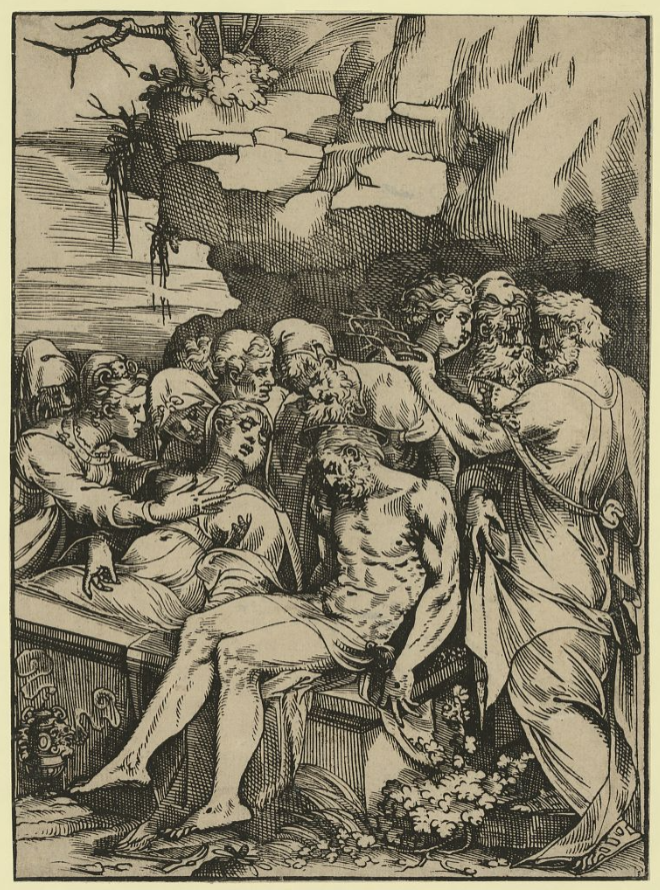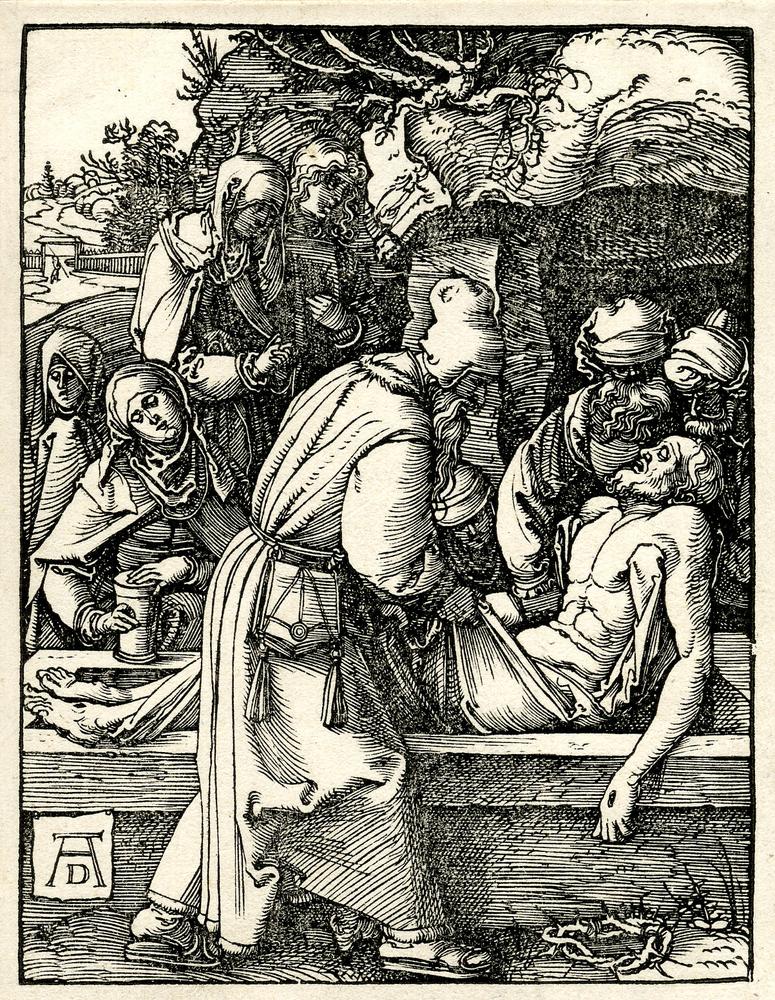
St. Joseph of Arimathea is best noted for his pursuit of the kingdom of God and fo being a faithful disciple of Jesus—a man who poured out his love by caring for and burying his Lord’s body. Though only mentioned briefly, Joseph appears in all four of the Gospels, signifying his importance to the story of salvation for which we give thanks to God on July 31st.
We first learn of Joseph within the Biblical narrative on the evening of Good Friday. Like his friend and fellow covert disciple, Nicodemus, Joseph was both a man who was a follower of Christ and simultaneously a public man and a respected member of the council. The evangelists relay to us a bit about Joseph’s character: he was a just man and never consented to the council’s decision regarding Jesus. Courageously, Joseph approached Pilate in secret to ask for the body of Jesus.
With Pilate’s permission, Joseph took Jesus’ body, purchased a linen shroud, and together with Nicodemus prepared the body with spices before placing him in a tomb hewn from a rock. This was likely Joseph’s own tomb as Joseph was a wealthy man. Many scholars have noted that Joseph’s tomb also bore semblance to the colt on which Jesus rode the previous week. Like the new colt, the tomb was yet unused, suggesting that it was fit for a king.
Joseph’s humble and reverent role in caring for his Lord’s body is important because he played a part in fulfilling Isaiah’s prophesy of the suffering servant: “And they made his grave with the wicked and with a rich man in his death, although he had done no violence, and there was no deceit in his mouth” (Isaiah 53:9). Second, the Church confesses Joseph’s work in the creeds: “Jesus suffered under Pontius Pilate, was crucified, died, and was buried.”

Brief History
St. Joseph of Arimathea received special interest in early Church history. Irenaeus and Eusebius both make mention him in their writings, and there even exists “The Narrative of Joseph of Arimathea” which claims that it was written directly by him, unlikely as that might be. Even with the little that is known about Joseph from the Scriptures, the Church has long chosen to commemorate the man who saw to it that the Son of God who laid the earth’s foundation was laid tenderly into the ground
Collect
O Almighty God, who hast knit together Thine elect in one communion and fellowship in the mystical body of Thy Son Jesus Christ, our Lord: grant us grace so to follow Thy blessed saints in all virtuous and godly living, that we may come to the unspeakable joys which Thou hast prepared for those who unfeignedly love Thee; through the same, Jesus Christ, Thy Son, our Lord, who liveth and reigneth with Thee and the Holy Ghost: ever one God, world without end. Amen.

Lessons
Resources
Issues, Etc. interview with the Rev. Dr. Bill Weinrich on Joseph of Arimathea
Propers found in Daily Divine Service Book: A Lutheran Daily Missal, edited by the Rev. Heath Curtis
References:
1. Weedon, William. Celebrating the Saints. Concordia Publishing House. 2016.
Images:
1. The Entombment, Andrea Schiavone after Parmigianino, Italy, ca. 1563.
2. The Entombment of Christ, Sisto Badalocchio, Italy, 1610.
3. Joseph of Arimathea and two other men lowering the body of Christ into the tomb, from The Small Passionca, Albrecht Dürer, Germany, 1510.




[…] St. Joseph of Arimathea is known for taking it upon himself to ensure that Jesus received a proper burial, even in Joseph’s own tomb. It was the custom of the Jews to wrap a body in a linen shroud with spices, and this is exactly what Joseph did for his Lord with the help of Nicodemus, who brought the mixture of myrrh and aloes. Little else is known about Joseph for sure, although various traditions exist about what exactly happened to him after the short episode we are given in Scripture. Nevertheless, he is remembered first and foremost for his good deed of respecting the holy body of his Lord and is pictured in paintings and icons with some of the elements used in burial. […]